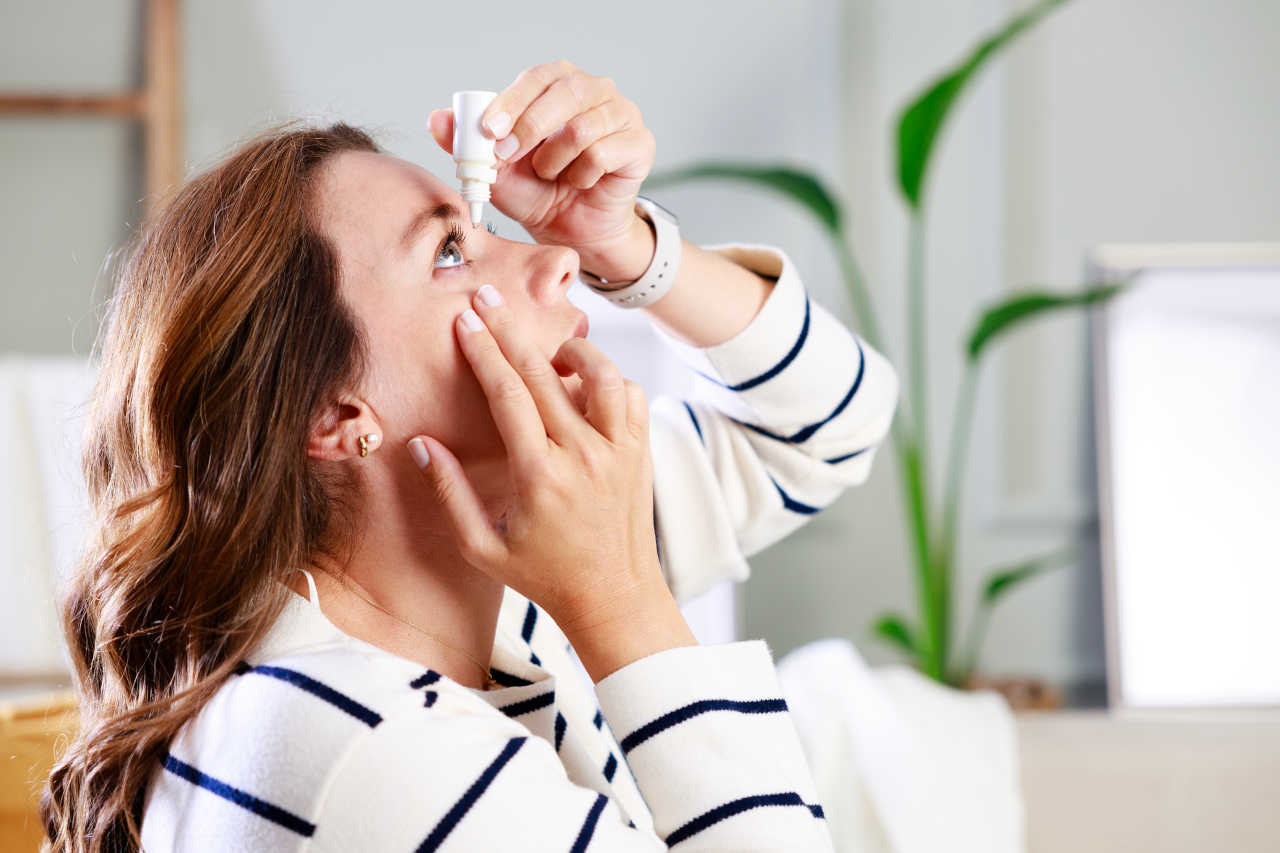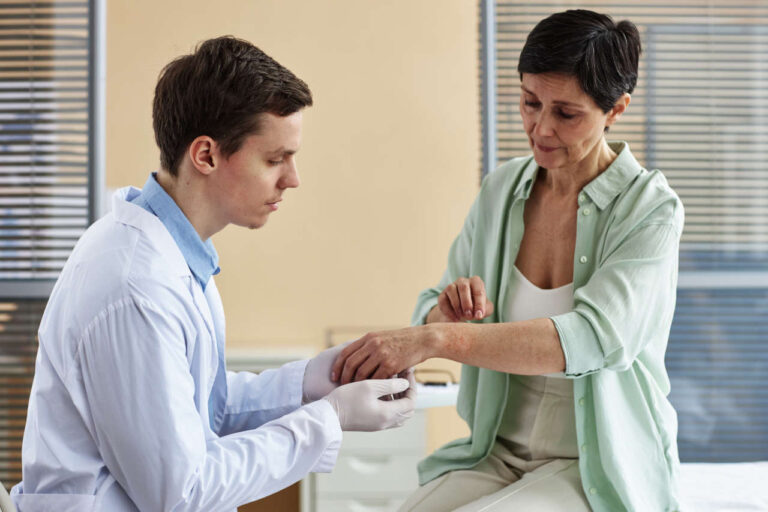
Birdshot retinochoroidopathy, also known as birdshot uveitis, is a chronic disease of the eye. This condition is rare and primarily affects the two crucial components of your eye, the retina and choroid, which are responsible for vision.
Speak to a Specialist About Copay Assistance
Birdshot retinochoroidopathy can occur at any age but is predominantly seen in middle-aged people. Research shows that females are more prone to developing this eye condition than males.
Though this disease is uncommon, understanding this condition’s onset can help you manage its symptoms through immediate treatment.
In this article, we will briefly explain what birdshot retinochoroidopathy is, how it occurs, its symptoms, prevalence, diagnosis, and available treatment options.
Overview of Birdshot Retinochoroidopathy
This inflammatory eye disease was initially identified in 1949. The condition was later called “birdshot retinochoroidopathy” by two eye specialists, Ryan and Maumenee, in 1980 because of its unusual clinical appearance, which consisted of cream-colored oval spots in the superficial (top layer) choroid and deeper retinal layer observed in 15 patients. These dots are similar in pattern to small shotgun pellets or birdshots (bullets).
Birdshot retinochoroidopathy is also known by other terms, such as birdshot chorioretinopathy and vitiliginous chorioretinitis, to name a few.
How Birdshot Retinochoroidopathy Occurs
The exact pathogenesis of birdshot retinochoroidopathy is unknown. However, it is suspected that it may occur as a result of an immune attack, where your immune system mistakenly attacks your healthy tissues (in this case, the cells of your retina and choroid).
The retina is the light-sensitive tissue at the back of your eye that senses light signals and sends signals to the brain so you can see. Choroid, which is packed with blood vessels to provide eyes with oxygen and nutrients, connects your retina to the white part of your eye.
The immune attack causes inflammation in these areas (retina and choroid), which leads to visual disturbance and vision loss over time.
Genetic factors may also play a role in the onset of this condition. According to research, the HLA-A29 gene variant triggers immune reactions and is central in the development of birdshot retinochoroidopathy. Around 95% of birdshot retinochoroidopathy patients carry the HLA-A29 allele.
However, HLA-A29 positivity doesn’t mean you’ll definitely develop the condition since birdshot retinochoroidopathy is also reported in non-HLA-A29 carriers. Therefore, possessing the HLA-A29 allele alone is not sufficient for a diagnosis.
What Are the Symptoms of Birdshot Retinochoroidopathy?
The symptoms of birdshot retinochoroidopathy may vary among patients. Since it is a chronic (long-term) condition, symptoms develop and progressively get worse over time (several months to years).
Birdshot retinochoroidopathy mainly affects both eyes. The early symptoms you are most likely to experience are blurred vision, floaters (seen in 29% of cases), and decreased vision (seen in 68% of cases).
However, you may also experience the following symptoms:
- High eye pressure (ocular hypertension)
- Night blindness (nyctalopia, seen in 25% of cases)
- Problems with color vision (dyschromatopsia, seen in 20% of cases)
- Sensitivity to bright lights (photophobia)
- Seeing flashing lights
- Distortions in shapes
- Loss of depth perception or peripheral (side) vision
In severe cases, you may experience cataracts, which can cause severe vision loss even after treating inflammation. It’s essential to consult your eye specialist if you experience the symptoms mentioned above.
How Common Is Birdshot Retinochoroidopathy?
Birdshot retinochoroidopathy is a rare disease and accounts for 1 – 2% of all types of uveitis. It is more prevalent in middle age (between 40 and 60 years of age) and rarely affects children.
The incidence of this disease is highly prevalent in White populations.
Gender-wise, women are more likely to develop this condition than men.
Get Financial Assistance
How Is Birdshot Retinochoroidopathy Diagnosed?
The diagnosis of birdshot retinochoroidopathy can be difficult. It is a rare disease, and unique spots may not be visible in the early stages.
However, based on the symptoms of the patients, eye specialists examine the eyes, and if they suspect you have this condition, they may run some clinical and functional testing, which includes:
- Fluorescein angiography (to check retinal inflammation)
- Fundus autofluorescence (to check photoreceptor health)
- Optical coherence tomography (to analyze the retinal and choroidal layers)
- Blood test (to check HLA-A29 antigen in the patient’s blood)
These tests are also commonly used to monitor the progression of the disease over time.
What Are the Treatment Options for Birdshot Retinochoroidopathy?
Currently, there is no available cure. Initially, Eye specialists prescribe high doses of corticosteroids to control eye inflammation and then slowly reduce the dose due to their side effects.
These corticosteroids could be administered as eye drops, injections, or oral medicines to reduce the inflammation.
In some cases, you may also require long-term treatment with immunosuppressant drugs or immunomodulatory therapy (IMT), a standard care treatment for birdshot retinochoroidopathy. This therapy stops your immune system from attacking your eyes, prevents inflammation, and preserves visual function.
Conclusion
Birdshot retinochoroidopathy is an eye disease that causes inflammation in the retina and choroid. Patients experience blurred vision, floaters, or decreased vision. It mostly affects middle-aged people and is more prevalent in females. This condition can even lead to permanent vision loss if undertreated or unrecognized.
Early on-time diagnosis and effective treatment regimes can help slow the disease’s progression and manage its symptoms.
REFERENCES:
- Bousquet, E., Duraffour, P., Debillon, L., Somisetty, S., Monnet, D., & Brézin, A. P. (2022). Birdshot Chorioretinopathy: A Review. Journal of Clinical Medicine, 11(16). https://doi.org/10.3390/jcm11164772
- Bergstrom, R., & Czyz, C. N. (2023, August 8). Birdshot retinopathy. StatPearls – NCBI Bookshelf. https://www.ncbi.nlm.nih.gov/books/NBK554416/
- Minos, E., Barry, R. J., Southworth, H., Folkard, A., Murray, P. I., Duker, J. S., Keane, P. A., & Denniston, A. K. (2016). Birdshot chorioretinopathy: current knowledge and new concepts in pathophysiology, diagnosis, monitoring, and treatment. Orphanet Journal of Rare Diseases, 11(1). https://doi.org/10.1186/s13023-016-0429-8
- Birdshot retinochoroidopathy – uveitis.org | OIUF. (2018, July 16). Uveitis.org | OIUF. https://uveitis.org/patient_articles/birdshot-retinochoroidopathy/
- Professional, C. C. M. (n.d.). Birdshot chorioretinopathy. Cleveland Clinic. https://my.clevelandclinic.org/health/diseases/23024-birdshot-chorioretinopathy#symptoms-and-causes
- Minos, E., Barry, R. J., Southworth, S., Folkard, A., Murray, P. I., Duker, J. S., … & Denniston, A. K. (2016). Birdshot chorioretinopathy: current knowledge and new concepts in pathophysiology, diagnosis, monitoring, and treatment. Orphanet Journal of Rare Diseases, 11, 1-17. https://doi.org/10.1186/s13023-016-0429-8
- Bousquet, E., Duraffour, P., Debillon, L., Somisetty, S., Monnet, D., & Brézin, A. P. (2021). Birdshot Chorioretinopathy: A Review. Journal of Clinical Medicine, 11(16), 4772. https://doi.org/10.3390/jcm11164772
- Comander, J., Loewenstein, J. I., & Sobrin, L. (2011). Diagnostic testing and disease monitoring in birdshot chorioretinopathy. Seminars in Ophthalmology, 26(4–5), 329–336. https://doi.org/10.3109/08820538.2011.588661














